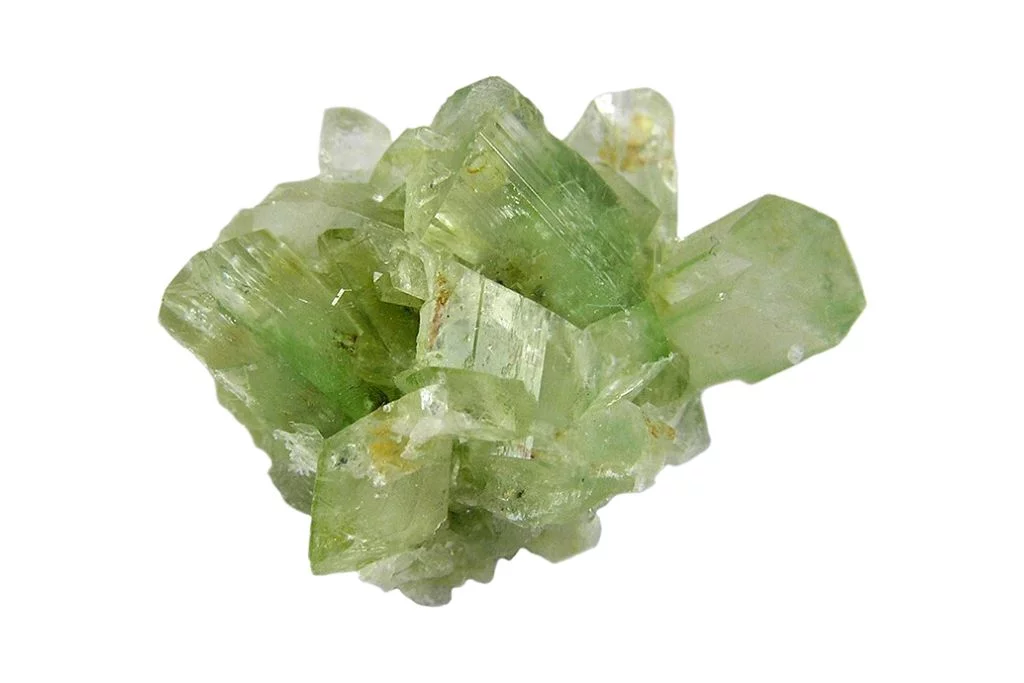Physical Appearance of Augelite
Augelite is a phosphate mineral that exhibits a distinctive appearance, making it a favorite among mineral collectors. This crystal typically forms in orthorhombic structures, often presenting as small, tabular crystals or as prismatic formations. The most common habit of augelite is flat, plate-like crystals that can sometimes be found in rosette-like clusters.
Color Variations
The color palette of augelite is relatively limited but nonetheless appealing. It most frequently occurs in shades of white to colorless, lending it a subtle, understated beauty. However, augelite can also be found in pale yellow or light green hues, which add to its visual interest. Occasionally, specimens may display a faint bluish tint, though this is less common.
Luster and Transparency
One of the most notable characteristics of augelite is its vitreous to pearly luster, which gives the mineral a glossy, glass-like appearance. This luster is particularly prominent on well-formed crystal faces. In terms of transparency, augelite ranges from transparent to translucent, allowing light to pass through to varying degrees. This property can create an attractive interplay with light, especially in clearer specimens.
Unique Features
What truly sets augelite apart is its perfect cleavage in one direction, which contributes to its tendency to form thin, plate-like crystals. This characteristic cleavage can result in a stepped or terraced appearance on crystal surfaces, adding to the mineral’s visual complexity. Additionally, augelite often occurs in association with other minerals, such as quartz or pyrite, creating striking contrasts in color and texture that enhance its overall aesthetic appeal.
Historical and Cultural Significance of Augelite
Augelite, though not widely known, has garnered interest among mineral collectors and metaphysical enthusiasts. This aluminum phosphate hydroxide mineral was first discovered in Sweden in 1868 and named after the German professor of chemistry Martin Heinrich Klaproth, whose middle name was August. While it lacks extensive historical or cultural significance, its rarity has made it a prized specimen for collectors.
Metaphysical Associations
In the realm of crystal healing and metaphysics, augelite is believed to possess several beneficial properties. It is often associated with mental clarity and enhanced communication. Practitioners claim that augelite can help in accessing higher wisdom and facilitating spiritual growth. The stone is thought to promote honesty and truth-telling, making it valuable for those seeking to improve their interpersonal relationships or engage in self-reflection.
Common Uses and Benefits
Augelite is primarily used in metaphysical practices and as a collector’s item. Crystal healers often incorporate it into meditation sessions, believing it can help clear the mind and enhance focus. Some use it as a tool for accessing intuitive knowledge or connecting with higher realms of consciousness. In alternative healing practices, augelite is sometimes placed on the throat chakra to promote clear communication and self-expression. Additionally, it is believed to aid in releasing negative emotions and promoting a sense of inner peace.
Traditional and Modern Applications
While augelite does not have significant traditional applications, its modern use is centered in the metaphysical community. Some people carry small pieces of augelite as a pocket stone for its purported calming and clarifying effects. Others may incorporate it into jewelry or display it in their living spaces to create an atmosphere conducive to mental clarity and spiritual growth. In crystal grids, augelite is sometimes used to amplify the properties of other stones or to focus intention on improved communication and honesty.

